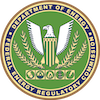Asian American, Native Hawaiian, and Pacific Islander Heritage Month (AANHPI) celebrates the many contributions that the AANHPI community has made to America’s past, present, and future success. Asian American and Native Hawaiian/Pacific Islander Heritage Month encompasses all of the Asian continent and the Pacific islands of Melanesia (New Guinea, New Caledonia, Vanuatu, Fiji, and the Solomon Islands), Micronesia (Marianas, Guam, Wake Island, Palau, Marshall Islands, Kiribati, Nauru, and the Federated States of Micronesia) and Polynesia (New Zealand, Hawaiian Islands, Rotuma, Midway Islands, Samoa, American Samoa, Tonga, Tuvalu, Cook Islands, French Polynesia, and Easter Island).
In 1977, Representative Frank Horton of New York introduced legislation to proclaim the first ten days in May as Pacific/Asian American Heritage Week. That same year, Senator Daniel Inouye introduced similar legislation, but neither passed. Representative Horton reintroduced and passed the bill to Congress in June 1978, signed by President Jimmy Carter on October 5, 1978. In 1990, Congress expanded the observance to the entire month of May, chosen to commemorate the immigration of the first Japanese Americans on May 7, 1843. It also marks the anniversary of the completion of the transcontinental railroad on May 10, 1869, which was constructed primarily by Chinese immigrants.
Asian American, Native Hawaiian, and Pacific American Heritage Month is about reclaiming the history and identity of AANHPI Americans. Celebrating and learning about cultural heritages brings a greater appreciation for humanity, resilience, and the diverse backgrounds that make up America today. It helps us understand how cultures are viewed, interact, and impact history.
To learn more about the AANHPI community, please visit the AANHPI resources below.
- Asian Pacific American Heritage Month
- Asian American and Pacific Islander Heritage Month
- Smithsonian Asian Pacific American Center
